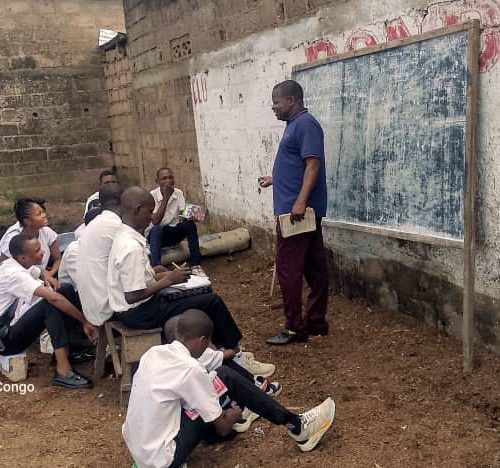Copyright © 2026 Hope Branham Trust Foundation. All Rights Reserved. Developed by WordCraft Tech.
Contact Us
- 640 Taylor St. Suite 1200 PMB 1007 Fort Worth, TX 76102 United States
Follow Us

Sustainability is no longer a buzzword but a crucial imperative for ensuring the long-term health of our planet and communities. At the heart of our mission is the drive to create projects that not only address immediate needs but also promote enduring growth and development. This article explores how our sustainability-focused projects are designed to foster long-term growth, benefiting communities, economies, and environments.
Sustainability involves meeting present needs without compromising the ability of future generations to meet their own needs. It encompasses environmental protection, social equity, and economic viability. Sustainable practices ensure that resources are used efficiently and responsibly, supporting both current and future well-being.
Long-term growth is essential for creating resilient communities and stable economies. Sustainable projects focus on creating lasting benefits that extend beyond immediate outcomes. By investing in long-term growth, we build a foundation for ongoing success and resilience against challenges such as climate change, economic fluctuations, and social inequalities.
Our approach to sustainability begins with integrated planning and design. We ensure that every project considers environmental, social, and economic factors from the outset. This comprehensive approach helps us create projects that are not only effective in the short term but also contribute to long-term sustainability.
We prioritize environmental considerations in our projects by implementing practices that reduce ecological impact. This includes using renewable energy sources, minimizing waste, and conserving natural resources. By focusing on environmental stewardship, we help preserve ecosystems and promote biodiversity.
Social impact is a key aspect of our sustainability efforts. We engage with local communities to understand their needs and aspirations, ensuring that projects are inclusive and equitable. By addressing social issues such as access to education, healthcare, and economic opportunities, we enhance community well-being and cohesion.
Economic viability is essential for the sustainability of any project. We focus on creating projects that are financially sustainable and generate long-term economic benefits. This includes supporting local businesses, creating job opportunities, and fostering economic resilience.
Capacity building and empowerment are central to our sustainability strategy. We provide training and resources to enhance the skills and capabilities of individuals and organizations. This includes vocational training, leadership development, and technical assistance.
Training and education are critical for empowering communities and ensuring the success of sustainable projects. We offer programs that cover various aspects of project management, environmental stewardship, and entrepreneurship. By equipping individuals with knowledge and skills, we foster self-reliance and long-term growth.
Community engagement is a cornerstone of our approach. We involve community members in project planning and implementation, ensuring that their perspectives and needs are considered. This collaborative approach enhances project effectiveness and sustainability.
Monitoring and evaluation are essential for assessing the impact and effectiveness of our projects. We use rigorous evaluation methods to track progress, identify challenges, and measure outcomes. This data-driven approach allows us to make informed decisions and continuously improve our projects.
Impact assessment helps us understand the broader effects of our projects on communities and the environment. We measure key indicators such as environmental impact, social benefits, and economic outcomes. This information guides our strategies and ensures that projects achieve their intended goals.
Continuous improvement is a fundamental principle of our sustainability approach. We use feedback from monitoring and evaluation to refine our projects and address any issues that arise. This iterative process helps us enhance project effectiveness and sustainability over time.
Our renewable energy initiatives focus on providing clean and sustainable energy solutions to communities. Projects include solar power installations, wind energy systems, and biogas facilities. These initiatives reduce reliance on fossil fuels, lower energy costs, and contribute to environmental conservation.
Sustainable agriculture programs aim to improve food security and support local farmers. We promote practices such as organic farming, crop diversification, and water conservation. These programs enhance agricultural productivity, protect soil health, and reduce environmental impact.
Our community-based health programs address health disparities and improve access to healthcare. We support the establishment of health clinics, provide medical training, and implement health education initiatives. These programs improve health outcomes and promote well-being in underserved communities.
Educational and vocational training programs are designed to equip individuals with the skills needed for economic success. We offer training in areas such as entrepreneurship, technical skills, and leadership. By investing in education, we empower individuals and foster long-term economic growth.
Infrastructure development projects focus on improving essential services and facilities. This includes building and upgrading roads, water supply systems, and sanitation facilities. Improved infrastructure enhances quality of life, supports economic activities, and contributes to community resilience.
The journey to sustainability is a continuous process that requires commitment, collaboration, and innovation. Our approach to sustainable projects emphasizes integrated planning, capacity building, and rigorous evaluation. By focusing on long-term growth and addressing environmental, social, and economic factors, we create projects that deliver lasting benefits to communities and the planet. As we move forward, we remain dedicated to fostering sustainability and building a brighter future for all.
